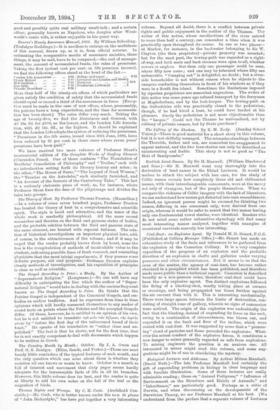Coal-Dust: an Explosive Agent. By Donald M. D. Stuart, F.G.S.
(Published at Colliery Manager Office.)—Mr. Stuart has made an exhaustive study of the facts and inferences to be gathered from the explosion at the Camerton Colliery. It is a very complete exposition of the progress of an explosion and the probable direction of an explosion in shafts and galleries under varying pressures and other circumstances. But it seems to us that the crux of the matter, the agency of coal-dust, has become rather obscured in a pamphlet which has been published, and therefore made more public than a technical report. Camerton is described broadly as a non-gaseous mine, therefore coal-dust could have been the only explosive agent. Ten distinct explosions followed the firing of a blasting-shot, mostly taking place at corners or crossings, and being propagated ten times further against the air current than with it. This is interesting mechanically. There were large spaces between the limits of destruction, con- sisting of straight runs of gallery, wherein no signs of concussion were noticed. The origin of the explosion was undoubtedly the fact that the blasting, instead of expending its force on the rock, owing to a combination of circumstances, was blown out, and expended it on the bank and floor of the incline, which were coated with coal-dust. It was suggested by some that a "pioneer- ing" cloud of particles and flame preceded the explosions. What- ever the actual conduct of the explosive forces, it constitutes a new danger to mines generally regarded as safe from explosions. To mining engineers the question is an anxious one. All interested in mines might read this volume, and some sug- gestions might be of use in elucidating the mystery.


































 Previous page
Previous page